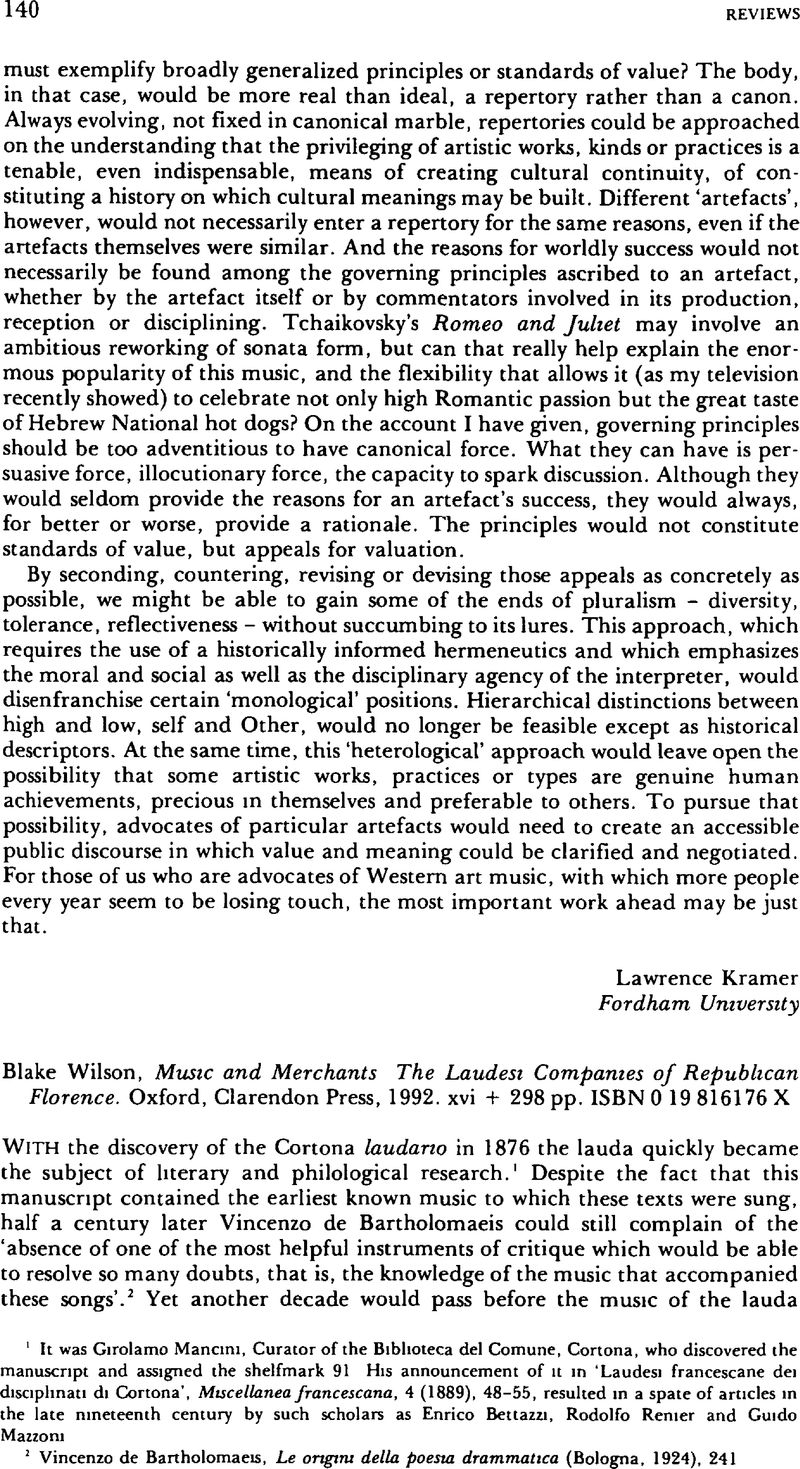No CrossRef data available.
Article contents
Blake Wilson, Music and Merchants The Laudesi Companies of Republican Florence. Oxford, Clarendon Press, 1992. xvi + 298 pp. ISBN 0 19 816176 X
Review products
Published online by Cambridge University Press: 01 January 2020
Abstract

- Type
- Reviews
- Information
- Copyright
- Copyright © 1994 Royal Musical Association
References
1 It was Girolamo Mancini, Curator of the Biblioteca del Comune, Cortona, who discovered the manuscript and assigned the shelfmark 91 His announcement of it in ‘Laudesi francescane dei disciplinati di Cortona’, Miscellanea francescana, 4 (1889), 48–55, resulted in a spate of articles in the late nineteenth century by such scholars as Enrico Bettazzi, Rodolfo Renier and Guido MazzoniGoogle Scholar
2 de Bartholomaeis, Vincenzo, Le origini della poesia drammatica (Bologna, 1924), 241Google Scholar
3 2 vols (Rome, 1935). The work is a lavishly produced partial facsimile devoted to Cortona 91 and the Florentine manuscript Mgl1Google Scholar
4 2 vols (Venice, 1927)Google Scholar
5 The most recent and perhaps extreme example is Theodore Karp's study of the Cortona laudano, in which he analyses its many discrepancies and raises other issues of a theoretical nature completely without reference to the manuscript's provenance, which could actually shed some light on the problems peculiar to the collection See Karp, Theodore, ‘Editing the Cortona Laudano’, Journal of Musicology, 11 (1993), 73–105CrossRefGoogle Scholar
6 Brucker, Gene A, The Civic World of Early Renaissance Florence (Princeton, 1977), John S Henderson, Piety and Charity in Late Medieval Florence (Oxford, 1993); Gilles-Gerard Meersseman, O P., Ordo fraternitatis Confraternite e pietà dei laici nel mondo medioevo, 3 vols (Rome, 1977), and Ronald Weissmann, Ritual Brotherhood in Renaissance Florence (New York, 1982)Google Scholar
7 For musicological studies see various books and articles of Nino Pirrotta, Frank D'Accone and Cyrilla Barr, all cited by Wilson In the field of religious theatre see especially Nerida Newbigin, ‘The Word Made Flesh The Rappresentazioni of Mysteries and Miracles in Fifteenth-Century Florence’, Christianity and the Renaissance, ed Timothy Verdon and John Henderson (New York, 1990), 361–75. See also Laude Cortonesi dal secolo XIII al XIV, ed Giorgio Varanini, Luigi Banfi and Anna Ceruti Burgio with musical portions ed Giulio Cattin, 2 vols, Biblioteca della rivista de storia e letteratura religiosa, studi e testi, 1–2 (Florence, 1981)Google Scholar
8 ‘Le quali si usano cantare in Firenze nelle chiese dopo vespro o la compieta con la propria musica e modo di cantare ciascuna Laude‘Google Scholar


